Names of jackets. What is a long jacket called?
Jacket, jacket, vest... What styles of these clothes are there and what are they? Let's talk about this in more detail and present photos and pictures of models.
A jacket is a short garment (jacket) with long sleeves and a turn-down collar, fastened with buttons. All models of jackets can be divided into two groups: single-breasted and double-breasted.
A vest is a short sleeveless vest, which, according to tradition, men wear under a jacket, and women - as they wish. A variety of vest models in different colors were the only way to show individuality in 19th-century men's clothing.
Classic models jackets serve as the basis business suit: they are strict, elegant, presentable!
However, there are many types of jackets for various purposes, with features of cut and finishing:
Jacket styles, models, types of jackets and vests
The main types of jackets that are familiar even to those uninitiated in the world of fashion are the jacket, jacket and blazer. But many people confuse which is which and what is the difference between a jacket and a jacket, and a blazer from a jacket. So what's the difference? It's simple. Blazer- free, in men's style jacket with sleeves, turn-down collar and fastening, double-breasted or single-breasted, jacket- this is the same jacket, only for women, fitted and shortened to the waist or mid-thigh, and blazer- this is a club jacket, that is, it is not formal, like a classic jacket, but is looser, with patch pockets. And now these and other types of jackets in more detail: Blazer- a jacket created like a uniform - with single-breasted or double-breasted button closure, often metal, with trim in the form of stripes of various emblems and symbols. The blazer is named after the cruiser, for whose crew a uniform was introduced in 1840, including jackets with vertical stripes. Today this name is used to designate not only uniform jackets, but also club jackets, intended for communication in an informal setting.
Bolero – short jacket without clasp. Modern boleros come with sleeves of various lengths. The basis for the creation of the bolero was the national Spanish costume.
Jacket– « women's jacket", which is a short, fitted garment with a through fastener. The cut of the jacket can be different: with set-ins, one-piece sleeves or “raglan” type, with a collar of any shape or without it at all, the main thing is the presence of a fastener and dense material that can retain its shape.
Zouave (Zouave jacket)- a model of a jacket, fashionable in France in the 19th century, which was richly decorated with braid and worn with a crinoline. Appearance oriental motifs in fashion in France at this time it was associated with the conquest of Algeria in 1830.
Cardigan- a long jacket without a collar or lapels, named after Lord Cardigan, who contributed to the emergence of fashion for this element of the suit. The cardigan appeared in a modern suit in the early 60s of the last century.
Types of jackets, jackets - photo: 1 - double breasted jacket blazer, 2 - single-breasted blazer, 3 - bolero jacket, 4 - jacket, 5 - Zouave jacket (zouave), 6 - cardigan, 7 - classic jacket in men's style, 8 - quilted mandarin jacket, 9 - tuxedo, 10 - short jacket Spencer, 11 - frock coat, 12 - knitted jacket (jacket).
Classic jacket – jacket model male type with an English collar, the configuration of the lapels of which depends on fashion trends.
Mandarin (quilted)– a jacket made of thin silk, quilted with padding polyester, created on the basis of a Chinese costume: it has a straight silhouette, wide long sleeves, without a collar or with a stand-up collar, with button closure with hanging loops. It was introduced into European fashion by Japanese designers Kenzo and Yamomoto in the 70s of the 20th century. Its promoter was also Yves Saint Laurent.
The tuxedo– an elegant jacket with a shawl collar made of satin, on which cigarette ash does not linger, because it was created as part of men's suit for smoking. The women's tuxedo was introduced into fashion by Yves Saint Laurent in the 60s of the 20th century.
Spencer– a short jacket with long sleeves, popular in early XIX century; named after Lord Spencer, who once shortened the tails of his jacket. The women's spencer was very short - just below the waistline, which in Empire style dresses was under the bust.
Frock coat- a long double-breasted jacket that appeared in men's fashion in the 18th century. For a long time, the frock coat was the uniform of officials in Russia, so it has elements of uniform.
Knitted jacket– a sweater made of jersey with a through fastener from top to bottom. Externally, a knitted jacket can look like a cardigan, spencer, or bolero, but the main thing is that it must have a fastener. All knitwear without a fastener or with a fastener that does not go all the way down are called jumpers.
Figaro- a short vest, named after the hero of the comedy Beaumarchais.
Tailcoat– a jacket with short tails at the front and long tails at the back. The tailcoat style was proposed by cavalrymen in the 18th century when creating uniforms: the front flaps of caftans interfered with mounting a horse. Nowadays, a black tailcoat is clothing for special occasions.
French jacket- a closed uniform jacket with a stand-up collar, button fastening, patch pockets on the chest and hems with flaps and buttons. The jacket is named after British Field Marshal John French. IN women's fashion are used various variations models of French jackets, including those with zippers.
Is there some more interesting views jackets, you can see them in the photo below, for example: safari jacket, famous vintage Chanel style jacket with pockets and without collar, with round neckline, loose babydoll jacket high waisted, very similar to him swing jacket, peplum jacket with a peplum at the waist and below, trench coat, differing from a trench coat in its shorter length and fabric, sailor style jacket, luxurious, recently in fashion equestrian jacket Smythe, spare jacket, careless youth boyfriend blazer, retro 60s style jacket and others.
Models, styles of jackets - photos: 13 - tailcoat, 14, 15 - tunic (military style jacket), 16 - safari style jacket, 17 - Chanel jacket, 18 - peplum jacket (with a peplum at the waist or slightly lower and gathers at the bottom ), 19 - babydoll jacket ("doll", with a peplum above the waist and pleats at the bottom), 20 - loose "swing" jacket, 21 - equestrian jacket ("for riding", horse riding jacket, equestrian jacket), 22 - jacket with a wrap, with a belt, 23 - trench coat jacket, 24 - jacket in nautical style with one button closure.
Models fashionable jackets and vests are varied in styles, materials used and color scheme, which allows you to diversify your wardrobe modern woman. The most fashion models vests in the fall of 2011 are a variant of the classic sleeveless jacket: very unusual and stylish! Worth a try.
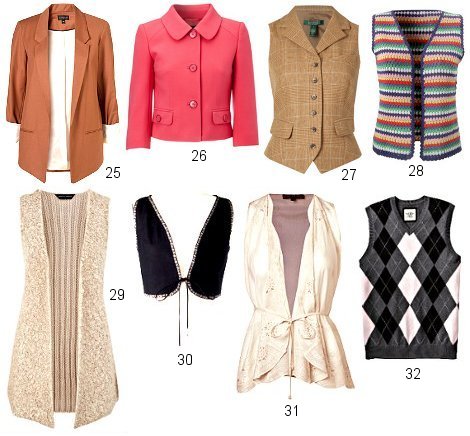
Varieties of jackets, types of jackets: 25 - loose "boyfriend" blazer without a fastener, 26 - cropped jacket in the style of the 60s with 3/4 (three-quarter) sleeves, 27 - classic vest with a fastener, 28 - short vest without a fastener, 29 - tunic vest, 30 - bolero vest, 31 short peplum vest with belt, 32 - sleeveless vest or blouson vest with argyle print.
Irina Shestakova for website
© Fammeo.ru All rights reserved
Blazer- a piece of clothing in the form of a jacket with long sleeves and an open turn-down collar, fastened with buttons. As a rule, it serves top part classical pantsuit, but can also be made not in pairs, that is, without. It can be single-breasted (with one row of buttons) or double-breasted (with two rows of buttons). The word "jacket" comes from the English "pea-jacket", which in turn came to English language from Dutch: "pijjekker", where "pij" is a type of coarse woolen material and "jekker" is a jacket.
Distinctive elements of the jacket:
Lapels - lapels reaching the top buttons; can be pointed, rectangular, slanted or falling, as well as solid with a collar - apache or shawl;
Pockets :
- chest pocket - used exclusively for placing a special scarf in it;
- side pocket - can be with or without a flap, set-in or patch pocket;
- patch pockets are allowed only on informal sports jackets or;
- often pockets are sewn tightly even during tailoring, since etiquette prohibits keeping hands and other objects in pockets;
- internal pocket - designed to store things - wallet, pen, phone, business card holder, etc.


Buttons:
- on board - sewn on, starting from the place where the lapel ends; if the jacket is single-breasted, the number of buttons is from one to four; if the jacket is double-breasted - from four to six in total on two rows;
- on the sleeves - sewn in the amount of three or four pieces at the bottom of the sleeves, usually in the amount of three or four; perform a purely decorative function;
Spline – a slit on the lower back of the jacket, designed for freedom of movement and easier access to the back trouser pockets. There may be options with one spline, two splines or no splines at all.
History of the jacket
Historically, the jacket is considered an item men's clothing. For female version The word “jacket” is usually used, although the combination “women’s jacket” can often be found.
The progenitor of the modern men's jacket can be found already in the era gothic style. Then it was called a jacket and looked like a short outerwear. At first it fitted the figure tightly, had wide bag-like sleeves and was decorated with fringe at the edges. With the arrival of the Jesuits, the jacket began to be made wider and longer. It was worn on a wams (a prototype of a vest) - a tight-fitting jacket with a cotton lining. With this appearance vams gave the upper body the shape of a goose belly or beer belly, which even then did not look very aesthetically pleasing. Gradually, the waistcoat approaches a narrow jacket, eventually transforms into a short jacket with a deep cut in the front and is completely replaced by a vest in the 17th century.
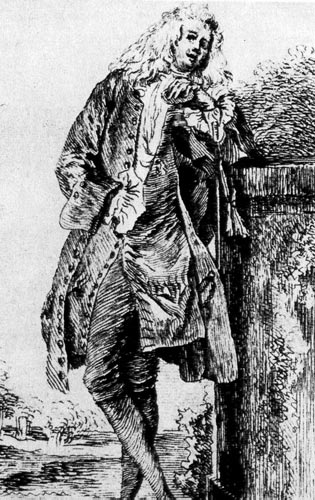

The jacket is being replaced by a jussocore (French “juste au corps” - “adjacent to the body”), or a camisole, invented under Louis XIV. The camisole was made from heavy materials, with abundant and often excessive embroidery. It was knee-length, had wide sleeves, large pockets and a large number of buttons
The frock coat (from the French word “surtout”) replaced the jusokor in the 18th century and was a long-length, double-breasted, fitted garment.
In the 19th century, a type of frock coat appeared - a cutaway coat with a more open chest and rounded flaps.
Narrow striped trousers were worn with frock coats and business cards.
The formal or ballroom version of the frock coat was called a tailcoat and was originally a cavalry uniform. The frock coat remained casual clothes middle and upper classes.
Along with fashion, the frock coat also changed - its length, waist position and sleeve shape changed, until in the 19th century it finally formed into a short, comfortable jacket. Jacket fashion even came to the Russian village, since after the abolition of serfdom in 1861, the connection between city and countryside strengthened. Peasants returning from waste farming came to the villages in fashionable city clothes. However, the fashionable city jacket was not entirely adapted to the simple peasant taste and very quickly turned into an everyday “pinzhak” or “spinzhak” - a long, single-breasted, knee-length jacket with a stand-up collar and a fastener on the left side. Finally, the urban type of jacket, close to the modern one, established itself in the villages only by the 1920s.
Nowadays, the jacket is, as a rule, an invariable part of the classic two-piece (three-piece) suit. The suit began to be sewn as a set of the same fabric only in the 60s of the nineteenth century. Until this moment, the jacket, trousers and vest were made from different fabrics, both in color and texture. The length of the jacket may vary, but classic version the jacket should cover the buttocks. Sleeves of the correct length should reach the wrist, while the sleeves should peek out from under the sleeves of the jacket by one or two centimeters.
- one of the ancestors modern jacket The jusokor, or camisole, was at first a privileged element of clothing, and it could only be worn with the highest permission of the king, who granted such a right to 50 courtiers;
- V mid-18th century century, the lower part of the camisole began to be set on waxed canvas or whalebone - this is a phenomenal case when men's fashion borrowed elements women's clothing, and even as inconvenient as;
- hardly anyone wondered why small buttons were sewn on the ends of the jacket. Meanwhile, such an innovation is the work of Bonaparte himself. If now these buttons serve an exclusively decorative role, then earlier, on his orders, tailors sewed them onto the sleeves so that sloppy soldiers would not wipe their noses on their sleeves when they had a runny nose and thus spoil their clothes;
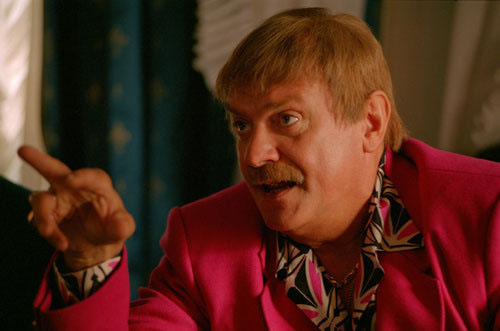

- The concept of a “raspberry jacket” entered the history of fashion. Shown in 1992 at Versace Paris Week, bright red jackets combined with classic trousers immediately migrated into the wardrobes of the new Russian nouveau riche. A crimson jacket (there were also versions in green and red) in combination with a gold chain around the neck has become an indispensable attribute of a wealthy person who can afford anything. Later, such jackets migrated to the wardrobe of anyone who wanted to create a “new Russian” for themselves. As a rule, these were uneducated people from the lower classes under thirty years of age, often criminals, upon whom wealth suddenly fell. The phrase “raspberry jacket” became a household word and was often mentioned in jokes. Even later, wealthy and respectable men switched to strict and restrained classic suits calm tones, and the crimson jacket sank into oblivion after the economic crisis of 1998.
The main types of jackets that are familiar even to those uninitiated in the world of fashion are the jacket, jacket and blazer. But many people confuse which is which and what is the difference between a jacket and a jacket, and a blazer from a jacket. So what's the difference? It's simple. A jacket is a loose, men's-style jacket with sleeves, a turn-down collar and a fastener, double-breasted or single-breasted, a jacket is the same jacket, only for women, fitted and cropped to the waist or mid-thigh, and a blazer is a club jacket, that is, not which is formal, like a classic jacket, but looser, with patch pockets. And now these and other types of jackets in more detail:
Blazer is a jacket created like a uniform - with single-breasted or double-breasted button closure, often metal, with trim in the form of stripes of various emblems and symbols. The blazer is named after the cruiser, for whose crew a uniform was introduced in 1840, including jackets with vertical stripes. Today this name is used to designate not only uniform jackets, but also club jackets, intended for communication in an informal setting.
Bolero is a short jacket without a fastener. Modern boleros come with sleeves of various lengths. The basis for the creation of the bolero was the national Spanish costume.
Jacket is a “women’s jacket”, which is a short, fitted garment with a through fastener. The cut of the jacket can be different: with set-in, one-piece sleeves or raglan type, with a collar of any shape or without it at all, the main thing is the presence of a fastener and dense material that can retain its shape.
Zouave (Zouave jacket) is a model of a jacket, fashionable in France in the 30s of the 19th century, which was richly decorated with braiding and worn with a crinoline. The appearance of oriental motifs in French fashion at this time is associated with the conquest of Algeria in 1830.
Cardigan is a long jacket without a collar or lapels, named after Lord Cardigan, who contributed to the emergence of fashion for this element of the suit. The cardigan appeared in a modern suit in the early 60s of the last century.

Types of jackets, jackets - photo: 1 - double-breasted blazer jacket, 2 - single-breasted blazer, 3 - bolero jacket, 4 - jacket, 5 - Zouave jacket (Zouave), 6 - cardigan, 7 - classic jacket in men's style, 8 - quilted Mandarin jacket, 9 - tuxedo, 10 - short Spencer jacket, 11 - frock coat, 12 - knitted jacket (jacket).
A classic jacket is a model of a men's jacket with an English collar, the configuration of the lapels of which depends on fashion trends.
Mandarin (quilted – “quilted blanket”) is a jacket made of thin silk, quilted with padding polyester, created on the basis of a Chinese costume: it has a straight silhouette, wide long sleeves, without a collar or with a stand-up, with a button closure with hinged loops. It was introduced into European fashion by Japanese designers Kenzo and Yamomoto in the 70s of the 20th century. Its promoter was also Yves Saint Laurent.
The tuxedo is an elegant jacket with a satin shawl collar that does not retain cigarette ash because it was designed as part of a man's smoking suit. The women's tuxedo was introduced into fashion by Yves Saint Laurent in the 60s of the 20th century.
Spencer - a short jacket with long sleeves, popular in the early 19th century; named after Lord Spencer, who once shortened the tails of his jacket. The women's spencer was very short - just below the waistline, which in Empire style dresses was under the bust.
A frock coat is a long double-breasted jacket that appeared in men's fashion in the 18th century. For a long time, the frock coat was the uniform of officials in Russia, so it has elements of uniform.
Knitted jacket – a jacket made of jersey with a through fastener from bottom to top. Externally, a knitted jacket can look like a cardigan, spencer, or bolero, but the main thing is that it must have a fastener. All knitwear without a fastener or with a fastener that does not go all the way down are called jumpers.
Figaro is a short vest, named after the hero of the comedy Beaumarchais.
A tailcoat is a jacket with short tails in the front and long tails in the back. The tailcoat style was proposed by cavalrymen in the 18th century when creating uniforms: the front flaps of caftans interfered with mounting a horse. Nowadays, a black tailcoat is clothing for special occasions.
French (tunic) - a closed uniform jacket with a stand-up collar, button fastening, patch pockets on the chest and hems with flaps and buttons. The jacket is named after British Field Marshal John French. In women's fashion, various variations of French jacket models are used, including those with zippers.
There are also interesting types of jackets, you can see them in the photo below, for example: a safari jacket, the famous vintage jacket in the Chanel style with pockets and without a collar, with a round neckline, a loose babydoll jacket with a high waist, a very similar “swing” jacket ", a peplum jacket with a peplum at the waist and below, a trench coat, differing from a trench coat in its shorter length and fabric, a sailor-style jacket, a luxurious, newly fashionable Smythe equestrian jacket, a wrap jacket, a casual youth blazer in the boyfriend style, retro 60s style jacket and others.
Models, styles of jackets - photos: 13 - tailcoat, 14, 15 - tunic (military style jacket), 16 - safari style jacket, 17 - Chanel jacket, 18 - peplum jacket (with a peplum at the waist or slightly lower and gathers at the bottom ), 19 - babydoll jacket ("doll", with a peplum above the waist and pleats at the bottom), 20 - loose "swing" jacket, 21 - equestrian jacket ("for riding", horse riding jacket, equestrian jacket), 22 - wraparound jacket with belt, 23 - trench coat jacket, 24 - nautical style jacket with one button fastening

Varieties of jackets, types of jackets: 25 - loose "boyfriend" blazer without a fastener, 26 - cropped jacket in the style of the 60s with 3/4 (three-quarter) sleeves, 27 - classic vest with a fastener, 28 - short vest without a fastener, 29 - tunic vest, 30 - bolero vest, 31 short peplum vest with belt, 32 - sleeveless vest or blouson vest with argyle print.
Almost every woman has such an elegant and beautiful thing as a jacket in her wardrobe. This detail of a woman’s outfit has not gone out of fashion for many years, and it is unlikely that it will ever become obsolete. Nowadays, numerous clothing stores offer widest choice jackets for every taste. So you can find short fitted jackets, long loose ones, jackets with zippers or buttons, with patch pockets and with hussar aiguillettes.
So where did women's jackets come from and what to wear them with? There is no consensus yet on the origin of the word jacket - some are sure that this word comes from the word jaquette, which during the last part of the Middle Ages meant a weekend suit. Others believe that this word comes from male name Jacques, which was quite common in France among peasants, who in turn loved to wear short jackets.
 True, at that time the jackets bore little resemblance to modern jackets. At the end of the 19th century, a tailor made for the Princess of Wales, who was then married to the future monarch of England, Edward VII, the first tailleur suit of its kind, which is somewhat reminiscent of modern women's jackets.
True, at that time the jackets bore little resemblance to modern jackets. At the end of the 19th century, a tailor made for the Princess of Wales, who was then married to the future monarch of England, Edward VII, the first tailleur suit of its kind, which is somewhat reminiscent of modern women's jackets.
The English tailor based his creation on a classic men's jacket and transferred it women's dress, dividing it into two components: a bodice and a double skirt. It was the corsage that later turned into what is now called a jacket. This new thing was usually worn over a blouse, and women rather appreciated its convenience and comfort. Women could wear this item from morning to evening, changing only blouses or blouses, and soon they could no longer do without jackets. This is how a new trend in fashion appeared - women's jackets.
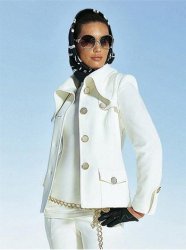 Over the entire existence of women's jackets, they have been improved many times. They were modified and supplemented with new details. Nowadays there are many varieties of jackets, so you can easily choose the appropriate jacket for almost any outfit. Jackets can be worn by all representatives of the fair half of humanity, regardless of age, figure and preferred clothing style. But one thing you can be absolutely sure of: an elegant jacket will make a woman irresistible and gorgeous.
Over the entire existence of women's jackets, they have been improved many times. They were modified and supplemented with new details. Nowadays there are many varieties of jackets, so you can easily choose the appropriate jacket for almost any outfit. Jackets can be worn by all representatives of the fair half of humanity, regardless of age, figure and preferred clothing style. But one thing you can be absolutely sure of: an elegant jacket will make a woman irresistible and gorgeous.
IN last years jackets are quite popular, and they can be combined with almost any clothing, so the question of what to wear a jacket with is unlikely to arise. In this case, you just need to adhere to the basic rules, and you can be sure that you will not go unnoticed. Today, there are about ten main types of jackets, depending on the material, cut and style. Some types of women's jackets were borrowed from the military. So, for example, a trench coat consisting of two English words trench and coat, literally meaning “clothing for the trench.” This phrase can also be translated as an overcoat.
 Having this name, this type of jacket has several military attributes. So the jacket has a turn-down collar, shoulder straps, a belt with loops, a flap on the back and tabs on the sleeves. Over time, such jackets became shorter and more fitted. Another type of jacket that came from military uniform is a classic Hungarian. Such a jacket is usually decorated with decorative braid, reminiscent of a dragoon uniform, as well as gold buttons.
Having this name, this type of jacket has several military attributes. So the jacket has a turn-down collar, shoulder straps, a belt with loops, a flap on the back and tabs on the sleeves. Over time, such jackets became shorter and more fitted. Another type of jacket that came from military uniform is a classic Hungarian. Such a jacket is usually decorated with decorative braid, reminiscent of a dragoon uniform, as well as gold buttons.
Not all types of jackets are based on military clothing. For example, the Chanel jacket, which came into fashion with light hand the legendary Coco Chanel. She took a classic detail of a men's suit as a basis, and made it more elegant and feminine. This jacket is usually quite short, has no collar and is decorated with braid along the sleeves and throat. A Chanel jacket usually goes well with skirts. Enough popular view jackets remains a cardigan.
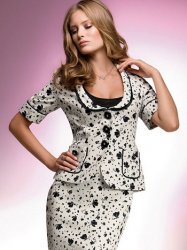 Such jackets are usually knitted and worn under a belt or under one button. The cardigan has no lapels or collar, it has a straight shape and is quite long. Almost the exact opposite of a cardigan is a spencer. This type of jacket has long sleeves and is a very short jacket. This jacket appeared at the turn of the 18th and 19th centuries and is named after the man who is believed to have invented this attribute of the outfit - Lord Spencer.
Such jackets are usually knitted and worn under a belt or under one button. The cardigan has no lapels or collar, it has a straight shape and is quite long. Almost the exact opposite of a cardigan is a spencer. This type of jacket has long sleeves and is a very short jacket. This jacket appeared at the turn of the 18th and 19th centuries and is named after the man who is believed to have invented this attribute of the outfit - Lord Spencer.
Initially, such jackets were worn exclusively by gentlemen, but soon the jacket smoothly migrated from men's closets to women's wardrobe, and now it is rare to see a man in such a jacket. Usually such a jacket is made in light colors and reaches almost to the waist, making it almost the shortest among the other jackets.
 It is no secret that much of what we now eat or wear is borrowed from eastern countries. This fully applies to jackets. This is how the well-known Nehru jacket appeared in European countries with the light hand of eastern traders. This long jacket has a stand-up collar and a blind clasp. This jacket is somewhat reminiscent of the traditional outfit of the Indian leader of the last century, Jawaharlal Nehru. Modern Nehru jackets are usually made from jacquard or matte brocade. These jackets look great paired with wide trousers, while the waist will be expressive and the silhouette will be feminine. To sew such jackets, it is better to use thin and glossy fabrics. Another unique gift from Eastern countries can be considered a Mandarin jacket, which is very similar to traditional Japanese or Chinese outfits. This jacket with wide sleeves
It is no secret that much of what we now eat or wear is borrowed from eastern countries. This fully applies to jackets. This is how the well-known Nehru jacket appeared in European countries with the light hand of eastern traders. This long jacket has a stand-up collar and a blind clasp. This jacket is somewhat reminiscent of the traditional outfit of the Indian leader of the last century, Jawaharlal Nehru. Modern Nehru jackets are usually made from jacquard or matte brocade. These jackets look great paired with wide trousers, while the waist will be expressive and the silhouette will be feminine. To sew such jackets, it is better to use thin and glossy fabrics. Another unique gift from Eastern countries can be considered a Mandarin jacket, which is very similar to traditional Japanese or Chinese outfits. This jacket with wide sleeves  has a straight shape.
has a straight shape.
The mandarin jacket has no collar at all. Distinctive feature Such jackets have fasteners with buttons and small hinged loops located asymmetrically along the jacket. In addition to mandarin, this jacket can also be called quilted, which literally means “quilted wood.” This jacket is often sewn from thin silky fabrics on padding polyester. Mandarin appeared in European countries after two Japanese designers, Yamomoto and Kenzo, worked for some time in Paris. Initially, they introduced the mandarin into high fashion, and soon this attribute of the women's wardrobe fell in love with the famous Yves Saint Laurent, who began to use this jacket in his shows.
IN modern world Fashion especially appreciates jackets made from shiny fabrics. Stylists recommend wearing jackets with rolled up sleeves, and the length of the jackets themselves is preferably not long, but not too short. If the jacket is made of shiny fabric, then it should not be excessively decorated with various decorative elements. In hot weather, jackets with short sleeves remain the most popular.
 For the beginning of autumn, when the ground begins to drown in golden leaves, jackets with three-quarter sleeves are perfect. At the same time, it is advisable to add elegant thin gloves to the outfit, which will complement and decorate the image of a feminine, delicate nature. If in the yard cold season, then you should give preference to jackets made in classic English version made from tweed and decorated with a classic check pattern. For fragile girls, the so-called mini-jacket is perfect. This type of jacket has slightly shortened sleeves and, in fact, length. A tight-fitting jacket emphasizes a feminine, fragile figure, but at the same time makes it clear that the woman has considerable masculinity.
For the beginning of autumn, when the ground begins to drown in golden leaves, jackets with three-quarter sleeves are perfect. At the same time, it is advisable to add elegant thin gloves to the outfit, which will complement and decorate the image of a feminine, delicate nature. If in the yard cold season, then you should give preference to jackets made in classic English version made from tweed and decorated with a classic check pattern. For fragile girls, the so-called mini-jacket is perfect. This type of jacket has slightly shortened sleeves and, in fact, length. A tight-fitting jacket emphasizes a feminine, fragile figure, but at the same time makes it clear that the woman has considerable masculinity. 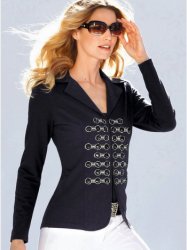
European stylists recommend getting a knitted cardigan, which will be especially in demand this year. Such jackets look great in combination with wide trousers or a tweed pencil skirt. It just so happens that some men's clothes easily and naturally migrate into the women's wardrobe. This fully applies to a men's cardigan, which a woman can wear with a belt. If a woman wants to wear a dress with a slightly high waist, then a tweed cardigan is perfect for this outfit.
If a woman’s outfit consists of monochromatic elements, then a silk or cotton jacket will perfectly break up such monotony. Tuxedo jackets are considered the peak of sophistication and elegance, which are usually worn directly over underwear or even completely naked, and at the same time tightly fit a slender figure. female figure, emphasizing her beauty and sexuality. The ostentatious severity of the outfit and the clarity of the lines of the jacket allow a woman to fully demonstrate her seductiveness. Often such jackets are made in dark colors, but there are also models in snow-white or traditional anthracite.
The jacket is one of the most popular and versatile men's items. basic wardrobe. It suits any body type due to its trapezoidal shape. The jacket visually widens the shoulders and hides excess fat in the abdominal area, due to which it forms the correct male silhouette. In profile, the jacket slightly reduces the stoop and rounds the chest. However, not all shortcomings can be hidden by clothing, so I recommend not to forget about sports activities, then the conversation will often be about how to emphasize the advantages. In this article I will talk about the types and features of jackets.
The suit jacket is the most common jacket on the planet and the most formal jacket presented in this article. As a rule, such a jacket is sewn from worsted wool. It is best to wear it as part of a suit in which the trousers match in color and material. There are exceptions to this rule, but it is difficult to choose other trousers or jeans to match a suit jacket. I will tell you how to do this correctly later. If you are purchasing a suit, I recommend buying additional trousers, otherwise your wardrobe will end up with a perfectly usable but orphaned jacket after a while. Premature wear of trousers is due to their more frequent washing and cleaning.
Shoes for a suit jacket: oxfords, derbies, loafers. Monks or moccasins look better with an unbuttoned shirt without a tie.
Let's take a closer look at the blazer and sports jacket. They are often confused because these types are always sold separately from trousers. What are the differences? How and with what to wear? The answers to these questions, as usual, lie in the history of the origin of these jackets.
Blazer - in terms of formality, it occupies a place between suit and sports jackets. The dark blue double-breasted blazer originated from the uniform of British naval officers in the early nineteenth century. In Great Britain, this type of military is the most respected, and from the sailors present at social events, the dark blue jacket with copper buttons gradually migrated to men's fashion, becoming publicly available.

The single-breasted blazer has no connection with the British Army and was used primarily in the uniform of elite rowing teams educational institutions England. These jackets had only two buttons so as not to hinder the movement of the rowers.
The modern blazer has many varieties and is made in different colors.
The English blazer is made with structured “solid” shoulders, always fitted, as it is designed for good figure. The double-breasted version has peaked lapels and is fastened with two buttons. The single-breasted version uses rectangular lapels and, as a rule, two buttons, in in rare cases three.




